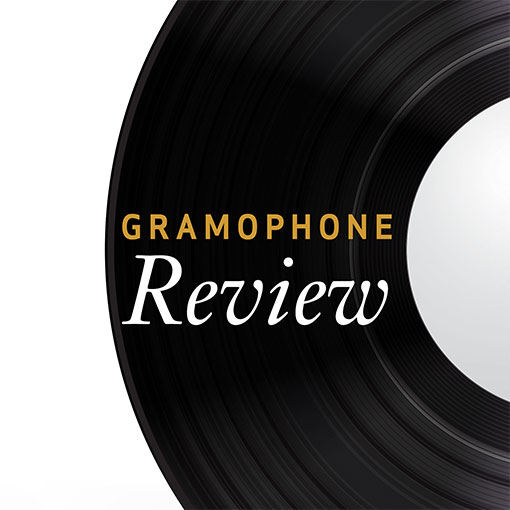Sibelius Piano Quintet; String Quartet
View record and artist detailsRecord and Artist Details
Composer or Director: Jean Sibelius
Label: Chandos
Magazine Review Date: 2/1990
Media Format: Cassette
Media Runtime: 0
Mastering:
DDD
Catalogue Number: ABTD1381

Tracks:
| Composition | Artist Credit |
|---|---|
| Quintet for Piano and Strings |
Jean Sibelius, Composer
Anthony Goldstone, Piano Gabrieli Qt Jean Sibelius, Composer |
| String Quartet in D minor, 'Voces intimae' |
Jean Sibelius, Composer
Gabrieli Qt Jean Sibelius, Composer |
Composer or Director: Jean Sibelius
Label: Chandos
Magazine Review Date: 2/1990
Media Format: CD or Download
Media Runtime: 74
Mastering:
DDD
Catalogue Number: CHAN8742

Tracks:
| Composition | Artist Credit |
|---|---|
| Quintet for Piano and Strings |
Jean Sibelius, Composer
Anthony Goldstone, Piano Gabrieli Qt Jean Sibelius, Composer |
| String Quartet in D minor, 'Voces intimae' |
Jean Sibelius, Composer
Gabrieli Qt Jean Sibelius, Composer |
Composer or Director: Jean Sibelius
Label: Chandos
Magazine Review Date: 2/1990
Media Format: Vinyl
Media Runtime: 0
Mastering:
DDD
Catalogue Number: ABRD1381

Tracks:
| Composition | Artist Credit |
|---|---|
| Quintet for Piano and Strings |
Jean Sibelius, Composer
Anthony Goldstone, Piano Gabrieli Qt Jean Sibelius, Composer |
| String Quartet in D minor, 'Voces intimae' |
Jean Sibelius, Composer
Gabrieli Qt Jean Sibelius, Composer |
Author: Robert Layton
The Quintet was probably inspired by (and is to some extent modelled on) the Sinding Piano Quintet, which Sibelius had heard when Busoni played it with the Brodsky Quartet in Leipzig. Busoni, indeed, had taken part in a performance of the first and third movements (some 22 minutes) of Sibelius's Quintet in Helsinki early in May 1890. The composer had actually finished the work in April but there was not enough time or, possibly more to the point, inclination to prepare all five movements. It is an ambitious (and not wholly successful) piece of some 40 minutes' duration. Chandos modestly omit to mention that this is its first commercial recording at least as far as the UK is concerned—and I do not know of any previous one elsewhere. Anthony Goldstone and the Gabrieli Quartet reverse the order of the second and third movements so as to maximize contrast: the Andante and Intermezzo are both slow, the former taking some 11 minutes. (Since most Compact Disc players these days enable one to programme various tracks in whatever order one likes, readers can restore Sibelius's original intentions with ease.) Sibelius was somewhat harsh in his own assessment of the piece: ''You can well believe how I have felt since the realization struck me that my Quintet is absolute rubbish'' (letter to Werner Soderhjelm). It is far from that, but at the same time it must be admitted it is not the equal of either the A minor or the Op. 4 Quartets.
The composer's teacher, Martin Wegelius made much of the poverty of Sibelius's piano writing, but although it is less effective than it might have been had he been a better pianist, this is not a major obstacle—particularly not in Goldstone's persuasive hands, for his playing is always imaginative and intelligent. Nor, incidentally, was Wegelius wholly right in speaking of there being ''no flow—just one section tacked on to another'' (to be fair, he thought the structure of the first movement impressive). In many ways it is the finest though Busoni's description of it as ''wunderschon'' is rather overdoing things. The Andante, too, has a lot of good music in it but is badly let down by a threadbare, march-like second theme. The Scherzo is attractive and very neatly played and though the finale is less satisfactory in terms of structure, it has a good deal of spirit and some memorable ideas. One is certainly glad to have this work on record, if only for showing us something of Sibelius's artistic growth in the years leading up to Kullervo.
The Voces intimae Quartet, on the other hand, is a masterly score. The only current alternative is by the eponymous Voces Intimae Quartet (BIS/Conifer (CD) CD10), an eminently serviceable account, dating from 1974 and coupled with the Schumann Quartet, Op. 41 No. 3. The present issue is a thoughtful reading, free from the slick over-projection that, in my opinion, mars some of today's brilliant jet-setting ensembles who have scored such success. It is selfless playing too: at no time is our attention drawn to the players and away from Sibelius. At times, in the first movement and again in the slow movement, I felt a need for just a little greater forward momentum, as I did with the Fitzwilliam LP version on Decca (nla), who also took an unhurried view of the terrain. They both take some five minutes longer than the pre-war Budapest Quartet and there are times when I felt a need for greater tautness and concentration of feeling. The fourth movement certainly needs more bite and forward movement yet the scherzo could not be done with greater delicacy and finesse. However, no one comes closer than they to the spirit of this music in the closing bars of the slow movement or the celebrated bars that Sibelius marked voces intimae. All Sibelians will want this issue. The recording is in the best traditions of the house.'
Discover the world's largest classical music catalogue with Presto Music.

Gramophone Digital Club
- Digital Edition
- Digital Archive
- Reviews Database
- Full website access
From £8.75 / month
Subscribe
Gramophone Full Club
- Print Edition
- Digital Edition
- Digital Archive
- Reviews Database
- Full website access
From £11.00 / month
Subscribe
If you are a library, university or other organisation that would be interested in an institutional subscription to Gramophone please click here for further information.




